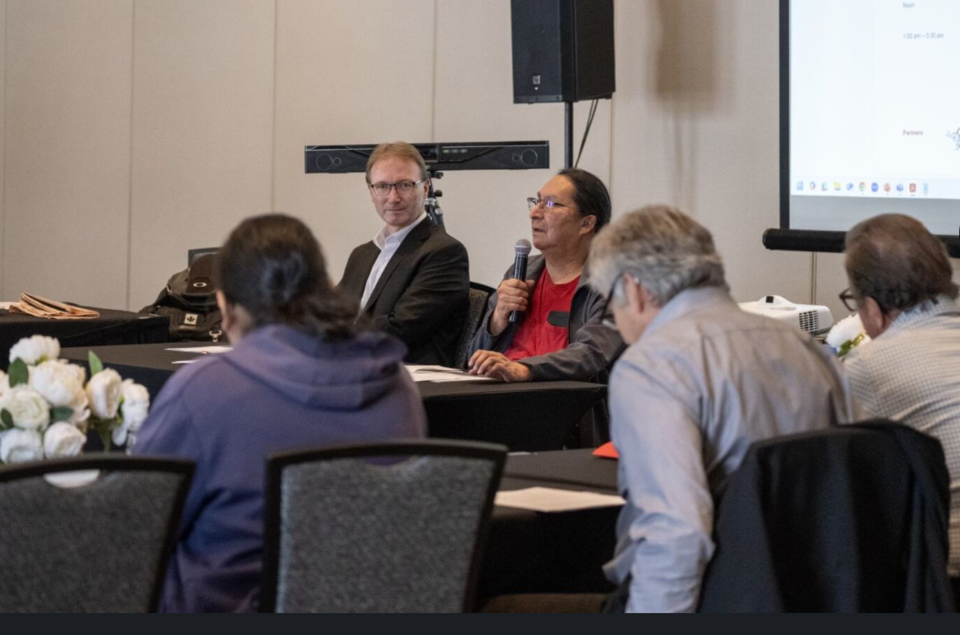Up until a month ago, Cat Lake First Nation’s brush with the forestry industry in northwestern Ontario had been nothing more than some seasonal tree planting jobs, said Chief Russell Wesley.
When Domtar ran the Dryden pulp mill, Wesley said locals did find employment through independent planting contractors, but nothing that created long-lasting sustainable jobs for its members.
Cat Lake’s location, 180 kilometres northwest of Sioux Lookout, has had something to do with it. With only a seasonal access road, the fly-in community is too far north to be involved in the extraction of fibre.
The community leadership now pins its hopes that a memorandum of understanding (MOU) signed last month with PRT Growing Services is their entry point into the region’s forestry industry.
Forest regeneration and development of a local bioeconomy, through various initiatives, are the cornerstones of Cat Lake’s strategy for community growth. Aligning themselves with a North American-leading supplier of tree seedlings in PRT to create training and job opportunities is one way to get there, said Wesley.
“These initiatives represent a significant step toward economic self-determination and sustainable resource management for Cat Lake and the forestry sector,” said Wesley to Northern Ontario Business.
“We want to get involved.”
Down the road, Cat Lake would like to duplicate the nursery operation that the B.C. company runs in Dryden by having one established in their own community at some point.
Establishing a tree seedling nursery is a “sensible and practical option” toward sustainable growth and development, Wesley said.
As well, the employment opportunities might repatriate some members back to the community, many of whom live off reserve in Dryden and Thunder Bay.
Randy Fournier, CEO of PRT Growing Services, applauds Wesley and his team for being catalysts for community growth.
“The chief definitely has a good vision of what they would like to see happen in and around the forest,” said Fournier.
“We had some great discussions with the chief and his folks and understood on what they wanted to achieve,” said Fournier. But it’s a step-by-step process, he said, to develop individuals who will, one day, be capable of operating a nursery facility.
“That’s where we come in.”
PRT Growing Services is North America’s largest producer of forest seedlings with 28 sites in North America — including a Dryden facility — which collectively grow more than 600 million seedlings annually.
The scale of a nursery, how it will be financed, and timelines to get one operating are part of ongoing discussions, said Wesley.
“My technician handles those efforts for me” when it comes to the project details and next steps, he chuckled. "I am into the big-picture planning.”
Fournier said they are just at the opening stage of what could be five-year process — from a training standpoint to a nursery operation — to evolve the partnership into a thriving working relationship.
“It’s a crawl, walk, run type of situation,” said Fournier.
Signing the MOU with Cat Lake is not just a feel-good, philanthropic endeavour on PRT’s part, he said.
It’s a business decision that provides mutual benefits. Cat Lake brings a wealth of knowledge of native and medicinal plants that PRT values. The community provides people who can help fill the company’s workforce gaps, Fournier said.
“We struggle at times to find the sufficient level of seasonal labour that we need in our industry. Even though we grow baby trees for a living, we’re really not a forest products company; we’re actually more of an agricultural company.
“We sow, we grow and we harvest.”
Teaming up with PRT certainly fits Cat Lake’s broader bioeconomy strategy.
Earlier this year, the community signed a partnership agreement with Natural Resources Institute Finland to do an ecological and economic assessment of area forests.
They’ll take stock of the region’s forest biomass supply and come up with a master plan for the community to guide development and lay out potential opportunities for mass timber, dimensional lumber, wood cellulose fibre and biomass energy.
Earlier this year, Cat Lake made news for its dispute with First Mining Gold, a mine developer in the advanced regulatory stages of preparation for a massive open-pit mining project, 40 kilometres from the community.
Fournier said the chief recognizes that the renewability of the forest is something that their community would benefit from participating more directly in.
“The nice thing about trees is it’s a renewable natural resource which, if managed properly, becomes in perpetuity in terms of an income stream.”
A Cat Lake nursery would certainly complement PRT’s Dryden operation, Fournier said. There is a need for having more seedling stock available for areas affected by wildfires, beyond just the woodlands that need replanting after harvesting.
The growth and success of a nursery means consideration must be given on the future of a permanent road into the community that is accessible overland only by a seasonal road.
Fournier said there will be limitations on the scale of a facility if launched as a fly-in type of nursery. It would be an expensive endeavour to bring in raw materials without an all-season road in place.
“There are limitations in terms of reach to go with your seedlings. Frankly, it’s no different than vegetables at a grocery store, where it's a perishable product. Once it’s ready and harvested, it needs proper storage and then to be planted.”
Wesley said road development is part of their long-term planning involving forest and bioeconomy-related partnerships with other neighbouring communities like Slate Falls.




